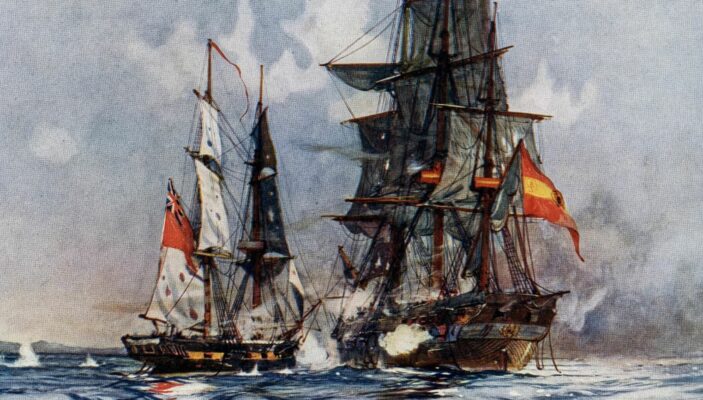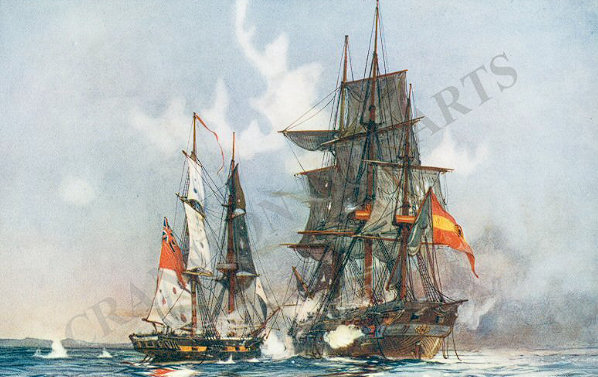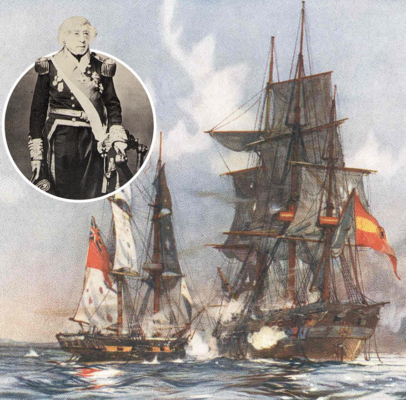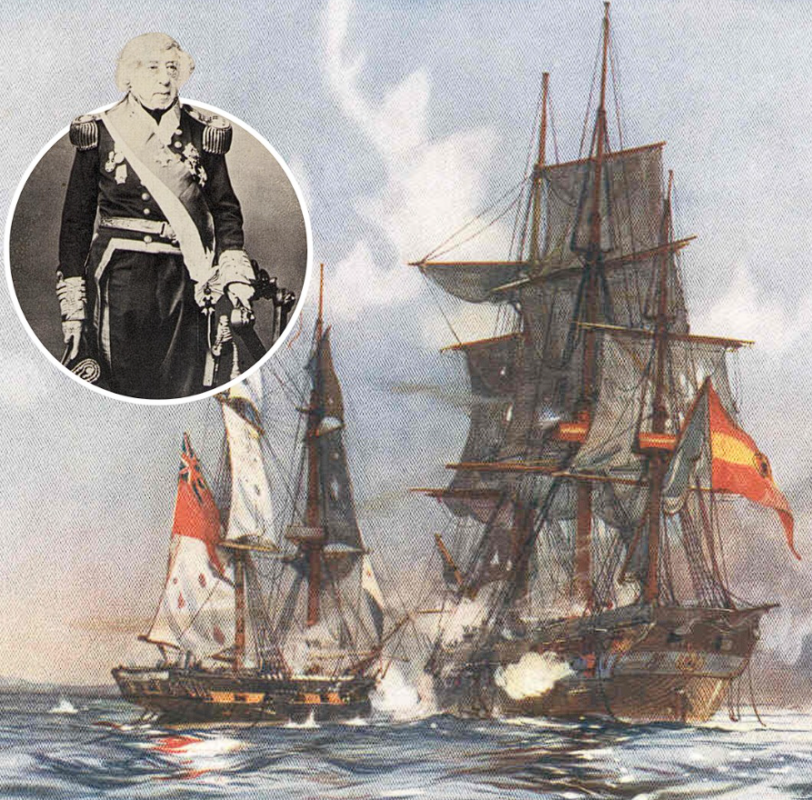Discover the astonishing naval battle of 1800 where Thomas Cochrane, commanding the small brig Speedy, faced off against the powerful Spanish warship El Gamo. A legendary tale of strategy, deception, and bravery at sea.
The Legendary Naval Battle of Thomas Cochrane
Who Was Thomas Cochrane?
Thomas Cochrane, a legendary British naval officer, is best known for his daring exploits during the Napoleonic Wars. His life and career inspired the character of Jack Aubrey from Master and Commander. Cochrane was a master of naval tactics, often using deception and unorthodox strategies to defeat much larger enemy ships. One of his most remarkable victories came in 1800 when he commanded the small brig Speedy against the formidable Spanish warship El Gamo.
The Speedy vs. El Gamo: A David vs. Goliath Battle
The Speedy: A Tiny but Formidable Ship
In 1800, Cochrane was given his first command—the small brig Speedy. The ship was lightly armed, carrying only 14 four-pounder guns, and had a crew of about 80 men. Despite its size, Speedy was highly maneuverable, allowing Cochrane to harass enemy vessels effectively. He quickly earned a reputation for his aggressive tactics, capturing numerous enemy ships and disrupting Spanish naval operations.
The Arrival of El Gamo
Cochrane’s success did not go unnoticed by the Spanish navy. Frustrated by his constant raids, they sent El Gamo, a heavily armed warship, to hunt him down. The Spanish vessel boasted 32 guns, ranging from 8-pounders to massive 32-pounders, and carried a crew of approximately 320 men—four times the manpower of Speedy.

The Battle Begins
A Clever Disguise
On a fateful morning in 1800, El Gamo finally caught up with Speedy. Realizing he was vastly outgunned, Cochrane resorted to deception. He disguised his ship as a Danish vessel, even employing a crew member who spoke Danish to impersonate the captain. This ruse bought him valuable time as the Spanish hesitated to attack. However, the trick didn’t last long, and El Gamo eventually identified Speedy as an enemy.
Speedy’s Tactical Maneuvers
Faced with overwhelming odds, Cochrane took an unconventional approach. He maneuvered Speedy dangerously close to El Gamo, ensuring that the larger ship’s heavy guns fired over his small vessel. The Spanish cannons, designed for long-range bombardment, failed to hit their target effectively. Meanwhile, Cochrane ordered his crew to aim at El Gamo’s deck, killing its captain with the first volley.
The Boarding Assault
A Bold Attack
After a prolonged exchange of fire, Speedy was running out of options. Cochrane made a daring decision—he ordered his men to board El Gamo. Despite being outnumbered nearly six to one, 53 of Cochrane’s crew stormed the Spanish ship while the ship’s doctor remained behind.

Victory Against All Odds
In a shocking turn of events, Cochrane’s men seized control of the quarterdeck and pulled down the Spanish flag. The remaining Spanish crew, believing their ship had surrendered, laid down their arms. The final tally of the battle was astonishing:
- Speedy: 3 killed, 9 wounded.
- El Gamo: 14 killed, 41 wounded, 300 captured.
The Aftermath and Legacy
A Hero Across Nations
Cochrane’s victory over El Gamo cemented his reputation as one of Britain’s most brilliant naval commanders. His exploits didn’t stop there—he later became a national hero in not one, but four countries, playing key roles in the wars of independence in Chile, Peru, and Brazil.

The Legend Lives On
Cochrane’s daring tactics and fearless leadership continue to inspire naval historians and military strategists. His influence extends beyond history books, finding its way into literature and film. The epic confrontation between Speedy and El Gamo remains one of the most incredible naval battles of the Age of Sail.
Conclusion Thomas Cochrane’s audacious triumph over El Gamo stands as a testament to the power of strategy, courage, and ingenuity. His ability to turn the tide of battle against impossible odds cements his legacy as one of the greatest naval commanders in history.


CÁC TIN KHÁC
Mary Walton: The Forgotten Inventor Who Helped Clean Up America’s Cities
Tomb of Queen Nefertari in the Valley of the Queens, Egypt
Discover the Hypostyle Hall of the Temple of Hathor at Dendera
Venus de Losange: Unveiling the Mystery of a 20,000-Year-Old Paleolithic Icon